For gardeners in warm-winter regions, trees laden with brightly colored citrus have a prominent place in the yard. While much of the garden may be dormant this time of year, late winter and early spring are busy times for citrus tree care, which includes tasks such as planting, fertilizing and pruning. In addition, a bountiful citrus crop may leave you looking for ways to preserve the fruit’s deliciousness once the harvest is over.
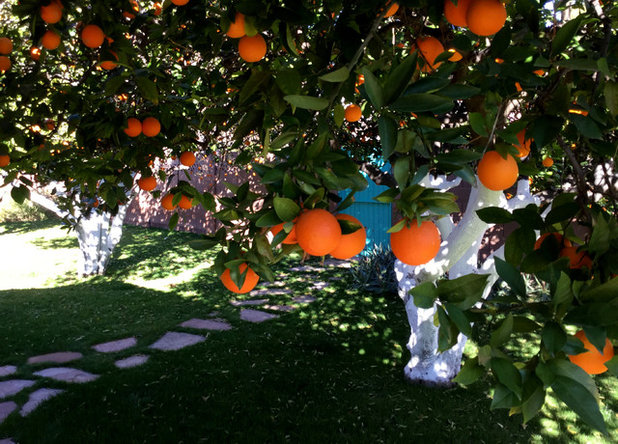
Noelle Johnson Landscape Consulting
Citrus trees contribute evergreen beauty and shade to the landscape, while the fragrance of their flowers perfume the garden in spring. The sweet yet tart fruit follows, met with eager anticipation. To ensure healthy citrus trees and good fruit production, the following tasks should be done in late winter and spring.
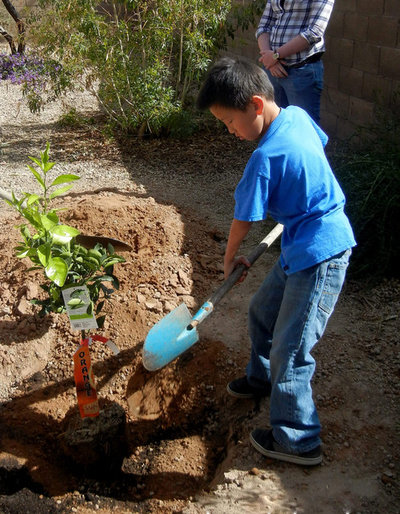
Noelle Johnson Landscape Consulting
Planting. Spring is the best time of year to add new citrus trees (early fall is second best). Although they can be planted in summer, they’re more susceptible to the stresses that hot weather can bring since they haven’t had time to develop new roots to help with water uptake. Planting can begin after the danger of frost has passed. The earlier that you can safely plant citrus trees, the better, since they’ll have more time to grow new roots before the heat of summer arrives.
When planting a new citrus tree, choose a location that receives full sun, but avoid western exposures — particularly in inland areas and low-desert regions — where the intense afternoon sun can cause stress.
Dig a hole two to three times as wide as the root ball, which will help new roots grow more easily. The depth of the hole should be the same or a few inches shallower than the root ball to avoid problems with the settling that often occurs after planting.
No fertilizer or soil amendments should be added when planting citrus. Studies have shown that adding fertilizer at the time of planting can hurt the roots and may promote leaf growth before the roots are sufficient enough to support it. Studies also have shown that adding soil amendments to the planting hole inhibits growth, since the roots tend to stay within the area of amended soil rather than grow outward past the planting hole.
A 2- to 3-inch layer of mulch applied around the citrus tree after planting conserves soil moisture, deters weeds and lowers soil temperatures in summer. Be sure to keep the mulch several inches away from the trunk, as it can be a breeding ground for disease if placed right against the trunk.
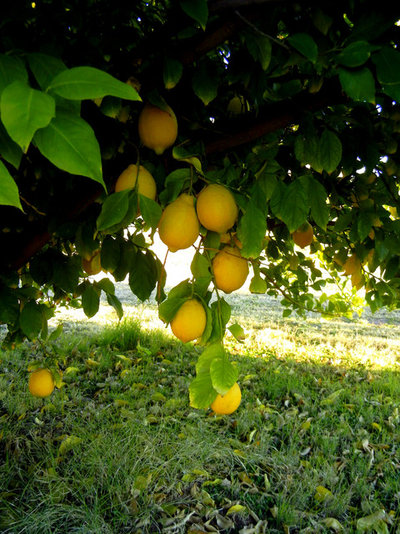
Noelle Johnson Landscape Consulting
Fertilizing. Citrus trees are heavy feeders and need to be fertilized about three times a year. A helpful way to remember when to fertilize them is by the holidays Valentine’s Day, Memorial Day and Labor Day. Fertilize citrus trees on or around those dates according to the package instructions, which are based on the tree size.
Learn more about fertilizing your citrus trees
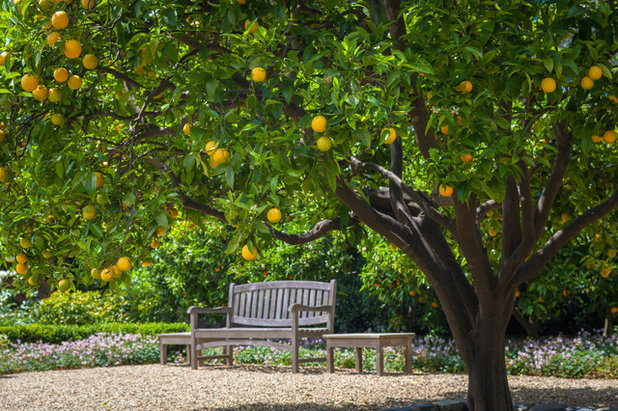
Terra Ferma Landscapes
Pruning. Spring is the time to begin pruning citrus trees, once the danger of frost has passed. Focus on removing dead, diseased and crossing branches.
Next, remove any suckers growing from the base of the tree, underneath the bud union (a swollen area where the top of the citrus tree has been grafted to the rootstock). Suckers are often thorny, and their foliage often looks a little different from the rest. Left alone, suckers will take over the citrus tree, leaving you with thorny branches and sour fruit.
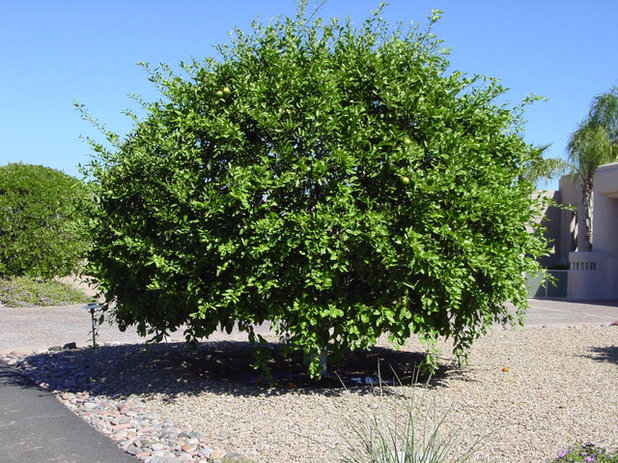
Noelle Johnson Landscape Consulting
Wayward branches that are growing out of proportion to the rest of the tree can be removed at this time as well. A general guideline is to remove no more than 20 percent of the foliage of a citrus tree in a given year, or it can become stressed and susceptible to environmental, insect or disease problems.
Citrus trees have two popular shapes. One is when their canopy is raised so that they have a more traditional tree form. The other shape is more natural and involves allowing the lower branches to grow down to within a few feet of the ground. While either shape is acceptable, citrus pruned up into the traditional tree form need more pruning, produce less fruit and may need protection from sunburn. Allowing citrus to grow into their more natural shape has benefits. Lower branches produce more and sweeter fruit than top branches, and they protect the bark from sunburn.
Special attention needs to paid to any citrus bark that’s exposed to direct sunlight. It’s highly susceptible to sunburn, which leads to peeling — the ideal environment for harmful fungal diseases, such as sooty canker, to take hold and grow. Prevention is the best strategy to avoid sunburn. Painting the trunk and branches of citrus trees that receive full sun with white citrus paint (often available at local nurseries) or a mixture of equal parts latex paint and water works to protect citrus trees from sunburn.
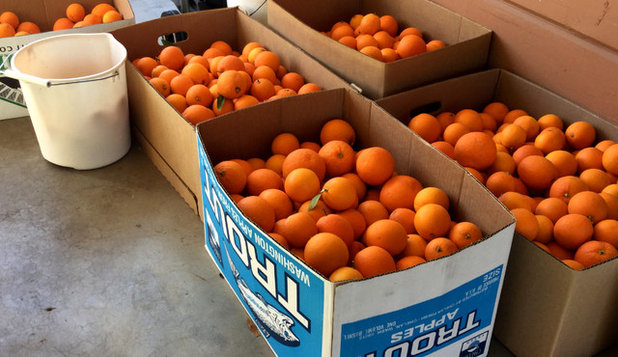
Noelle Johnson Landscape Consulting
Harvesting. Depending on what type of citrus tree you grow, you may be harvesting fruit in winter, spring, summer and fall. While a tree filled with colorful fruit can have you ready to harvest, it’s important to note that color isn’t the most reliable indicator of ripeness. One way to determine if a fruit is ripe is if it comes off the stem with a slight twist and gentle pull — if it’s harder to pick than that, it’s probably not ready. Another tip is to pick a fruit and do a taste test — if it isn’t ready, wait 10 days before trying again.
Citrus fruits don’t ripen after they’re picked, so keep them on the tree until you’re ready to use them. Once the harvest season is over, make sure to remove all fruits from the tree and ground to prevent problems with pests, including rodents that like to eat them.
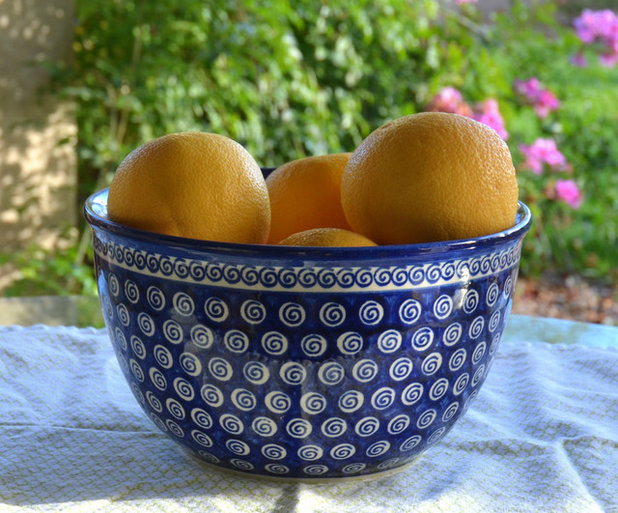
Noelle Johnson Landscape Consulting
Preserving. Now that we’ve covered spring citrus tasks, let’s explore ways to use our bounty. Squeezing the juice and eating the fruit out of hand will always be the first things that we enjoy about growing citrus, but there are ways that we can prolong the harvest long after the fruit is gone from our trees.
Here are a few ways to keep the fresh taste of citrus all year with a little help from your freezer.
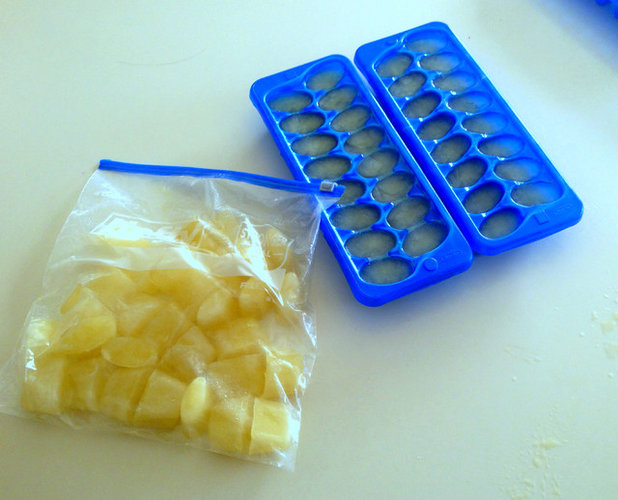
Noelle Johnson Landscape Consulting
Citrus juice freezes well and can last up to a year in the freezer. Fresh grapefruit, lemon, lime and orange juice can be poured into ice cube trays, with the cubes then stored in plastic freezer bags. Later, you can add an ice cube or two to flavor your favorite dish or drink. Larger portions of citrus juice also can be frozen in plastic freezer bags or containers — lemonade anyone?
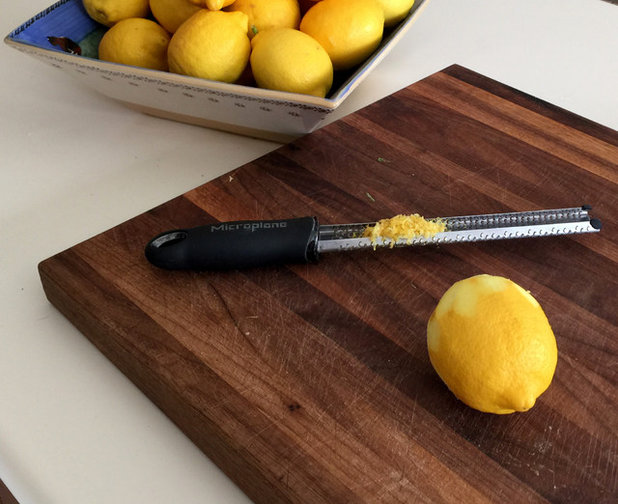
Noelle Johnson Landscape Consulting
The tang that the zest adds to our food is another reason why citrus trees are so popular. The zest from the peel also freezes well and can last up to a year. To zest your favorite citrus fruit, remove the colored part of the peel (not the white part) with a zester and store in a plastic freezer bag. Whenever you need zest, cut off a small portion and add it to your favorite sauce or dessert, or as a garnish.
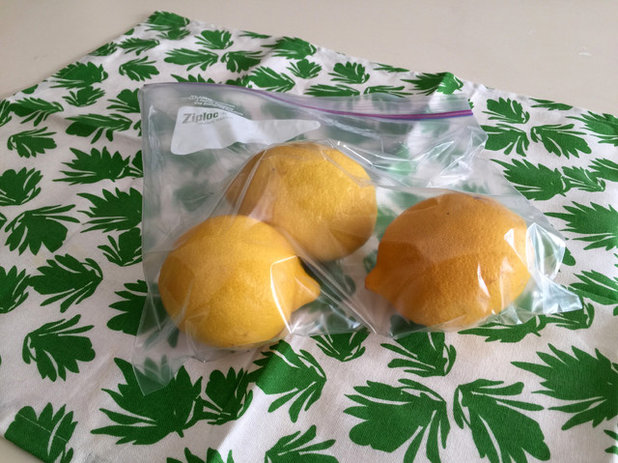
Noelle Johnson Landscape Consulting
Whole citrus fruits can be frozen for later use too. Put them in a plastic freezer bag, remove the air before sealing and freeze. Allow them to thaw for a couple of hours before using.
Citrus slices and wedges can be frozen as well, but they have to be frozen individually first. To do this, put each piece of citrus on a baking sheet lined with parchment paper and freeze for an hour. Remove the sheet from the freezer, put the pieces in a plastic freezer bag and store in the freezer, where they’ll be ready for you to use in beverages.
Take time to tend to your citrus trees this spring, and you’ll enjoy a delicious harvest for months.





